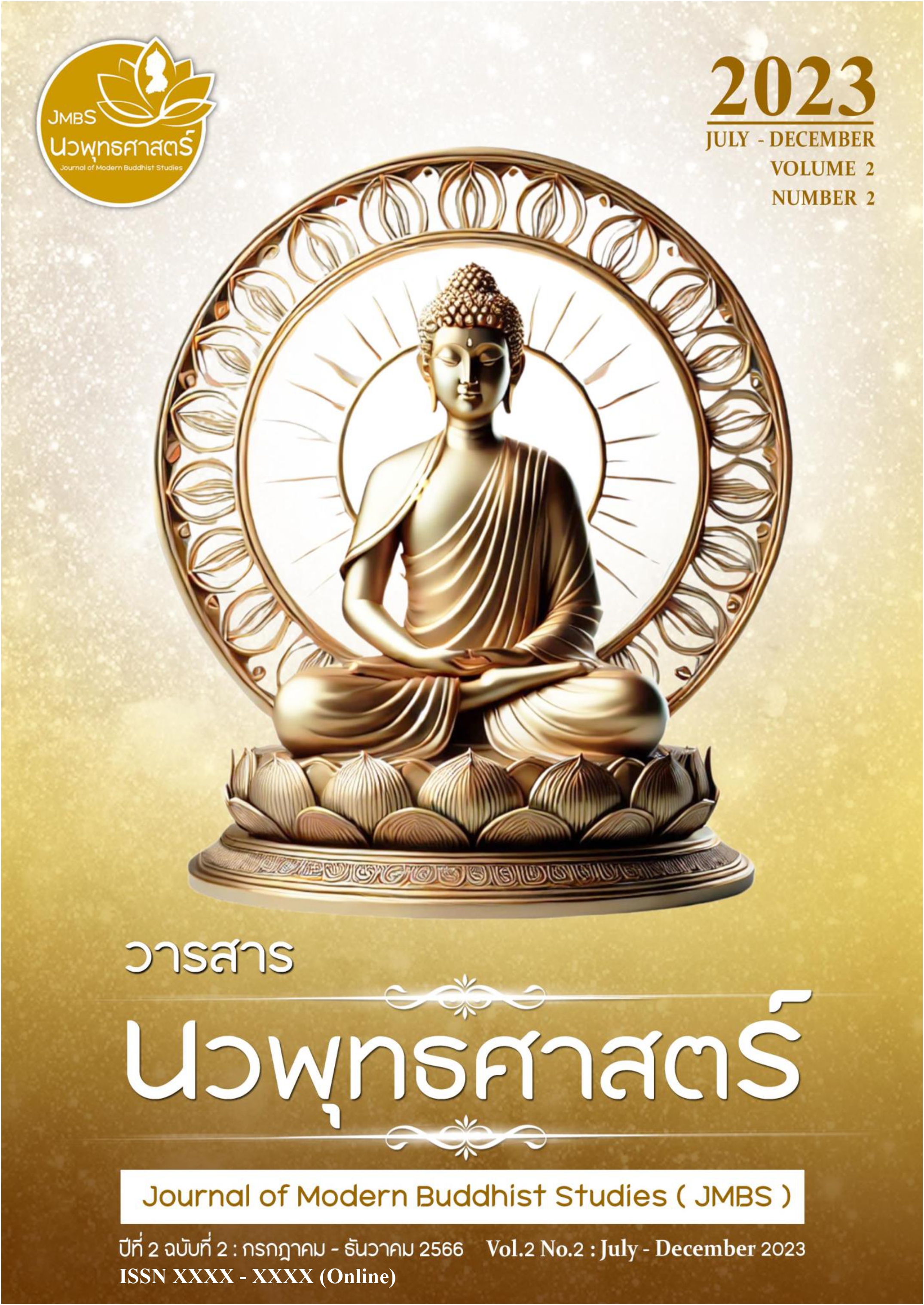ECOLOGICAL CULTURAL AND TOURISM OF WAT RONG SUEA TEN IN CHIANG RAI PROVINCE
Keywords:
Ecological cultural, tourism of Wat, wat Rong Suea Ten in Chiang Rai ProvinceAbstract
The research titled “Ecological Culture and Tourism of Wat Rong Suea Ten in Chiang Rai Province” aimed to: Study the ecological culture and tourism of Wat Rong Suea Ten in Chiang Rai Province. Develop ecological culture and tourism at Wat Rong Suea Ten. Foster the participation of networks and stakeholders in developing ecological culture and tourism at Wat Rong Suea Ten. The study employed qualitative research methods, collecting data through in-depth interviews with 17 key informants, purposively selected based on their relevance and expertise. Data analysis was conducted using interpretive and descriptive approaches, combined with document analysis. Key Findings: Characteristics of Ecological Culture and Tourism Wat Rong Suea Ten has developed its structures and facilities to accommodate tourists. It serves as a significant religious and ceremonial center. The temple is renowned for its unique architecture and historical significance, attracting cultural and ecological tourism. Development Strategies Emphasis on standards that align with economic, social, and environmental sustainability. Promotion of activities and knowledge dissemination related to ecological culture. Conservation of ecological culture through integrated development practices. Participation of Stakeholder Networks Activities should align with ecological culture to encourage community participation. Local communities play a crucial role in managing and promoting tourism by utilizing targeted publicity strategies and defining target groups.Wat Rong Suea Ten exemplifies a fusion of ecological culture and tourism, offering significant cultural, historical, and architectural attractions. The findings highlight the importance of community involvement and sustainable practices to ensure the long-term preservation and promotion of the temple's cultural and ecological identity.
References
กระทรวงวัฒนธรรม (2556). คู่มือการดำเนินงานโครงการภายใต้ยุทธศาสตร์ประเทศของกระทรวงวัฒนธรรม: โครงการรากวัฒนธรรม. กรุงเทพมหานคร: สำนักงานปลัดกระทรวงวัฒนธรรม.
ประพันธ์ สิริปัญโญ และจิรกิตต์ภณ พิริยสุวัฒน์ (2560). “นิเวศวิทยาวัฒนธรรม แนวคิดและการจัดการเพื่อการพัฒนาที่ยั่งยืนของจังหวัดเลย”. รายงานวิจัย. สถาบันวิจัยพุทธศาสตร์ : มหาวิทยาลัยมหาจุฬาลงกรณราชวิทยาลัย.
ผจงจิตต์ อธิคมนันทะ (2543). สังคมและวัฒนธรรมท้องถิ่นไทย. กรุงเทพมหานคร: สํานักพิมพ์มหาวิทยาลัยรามคําแหง.
พระสมุห์อนุรักษ์ ธีรสกฺโก (2555). “การพัฒนาวัดเพื่อการท่องเที่ยวเชิงพุทธในจังหวัดสมุทรสาคร”. วิทยานิพนธ์พุทธศาสตรมหาบัณฑิต สาขาวิชาการจัดการเชิงพุทธ.บัณฑิตวิทยาลัย: มหาวิทยาลัยมหาจุฬาลงกรณราชวิทยาลัย.
มูลนิธิสืบนาคะเสถียร (2566). การท่องเที่ยวเชิงนิเวศน์ (Ecotourism) : การท่องเที่ยววิถีอนุรักษ์ ผสาน คน กับ ธรรมชาติ เป็นหนึ่งเดียวกัน, สืบค้นข้อมูลจาก https://www.seub.or.th/bloging/ knowledge/ecotourism/
วศิน อิงคพัฒนากุล (2554). คุณลักษณะ 7 ประการของผู้ให้บริการที่ดี. สืบค้นข้อมูลจาก http://lib. dtc.ac.th/article /tourism
วีระ บํารุงรักษ์ (2566). กลุ่มประชาสัมพันธ์ สํานักงานคณะกรรมการวัฒนธรรมแห่งชาติ กระทรวงวัฒนธรรม, ความหมาย แนวคิดและประเด็นที่เกี่ยวกับ “วัฒนธรรม”. สืบค้นข้อมูลจาก http://www.openbase.in.th/node/ 5954.
สุฑาพรรธ์ ผดุงชีวิต (2566). การปรับตัวเข้าวัฒนธรรม. สืบค้นข้อมูลจาก http://library1.nida. ac.th/termpaper6/lang/2556/20080.pdf
สุรเชษฏ์ เชษฐมาส (2539). “การท่องเที่ยวเชิงอนุรักษ์:แนวคิด หลักการและความเป็นไปได้ในการประยุกต์ใช้ในอุทยานแห่งชาติ”. เอกสารประกอบประชุมสัมมนาอุทยานแห่งชาติกับนันทนาการ และการท่องเที่ยวในทศวรรษหน้าเพื่อทรัพยากรที่ยั่งยืน 27-28 พฤษภาคม 2539. กรุงเทพมหานคร : กรมป่าไม้.
อนุรักษ์ ทองขาวและคณะ (2561). ยุทธศาสตร์การพัฒนาการท่องเที่ยวเมืองรองติดชายฝั่งทะเลภาค ตะวันออกในมิติของคุณภาพการให้บริการ ภาพลักษณ์การท่องเที่ยว อุปสงค์การท่องเที่ยวและความภักดีของ นักท่องเที่ยว. รายงานการวิจัย. ภาควิชาศึกษาทั่วไปและภาควิชาบริหารธุรกิจ วิทยาลัยดุสิตธานีพัทยา.
Boo, E. (1991).Making Ecotourism Sustainable: Recommendations for Planning, Development, and Management, In Nature Tourism; Managing for the Environment. Washington D.C.: Island Press, 1991.
Ceballos-Lascuráin (1991) Héctor. “Tourism, Ecotourism and Protected Areas InParks. 2 (3) (March).
MGR ONLINE (2566). “วัดร่องเสือเต้น” ที่เที่ยวมาแรงแห่งเชียงราย งดงามวิจิตร จากฝีมือศิษย์ อ.เฉลิมชัย. สืบค้นข้อมูลจาก https://mgronline.com/travel/detail/9590000100258.
The International Ecotourism Society (2023). The Ecotourism Society’s Definition. From to https://ecotourism.org/.

Additional Files
Published
How to Cite
Issue
Section
License

This work is licensed under a Creative Commons Attribution-NonCommercial-NoDerivatives 4.0 International License.





